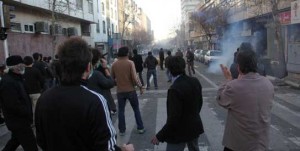In recent weeks, a parallel has been constantly drawn in the media between the Islamic Revolution in Iran in 1979 and the Egyptian uprising. Americans are increasingly hearing about the ominous possibility of an Islamist takeover perpetrated by the Muslim Brotherhood.
The Iranian Revolution has been portrayed as a horrible calamity for the progress of liberal democracy in the world. Some go as far as claiming that the Shah’s pro-American government was a positive asset to the Middle East.
This analysis betrays a gross oversight of the tyrannical nature of the Mohammad Reza Pahlavi’s rule and a lack of understanding of U.S. involvement in Iran leading up to the 1979 revolts.
In 1951, Mohammad Mossadiq was democratically elected the Prime Minister of Iran. Once he took office, he nationalized Iran’s oil holdings, then owned by the Anglo-Iranian Oil Company (later renamed British Petroleum).
After Mossadiq nationalized the AIOC, the company launched a boycott against Iran. This lead to a mass loss of jobs and public discontent in Mossadiq’s leadership. Additionally, the nationalization suddenly diverted a large source of revenue for the shareholders of the AIOC.
By 1953, the CIA funded a coup d’etat in Iran to oust Mossadiq’s government and secure the Shah as the head of state. For those in doubt, as of 2009, President Obama officially affirmed American involvement in the overturn.
To secure the Shah’s dictatorship, the U.S. and Israel funded and trained the SAVAK, which became one of the most brutal and repressive security forces in the world.
Political opposition was crushed more than ever before. The land belonging to religious endowments was confiscated and the outreach power of the religious leaders was severely limited. The Iranian parliament was reduced to the so-called “Yes” and “Yes, Sir” parties, wholly subservient to the Shah.
It is unquestionably true that the Shah’s regime was favorable for United States interests. And, by the mid-1970s, Iran had become a nation of 34 million people whose living standards and education levels were high.
Yet there was no access to political participation and the majority of the population was hopelessly disenfranchised, while the Shah’s family became fabulously wealthy from the nation’s assets.
The system was maintained by the patronage of the U.S. In 1976, Amnesty International declared that Iran had the worst human rights record in the world.
This is not to say that what is currently happening in Iran is good for Iranians. (In fact, the past few days have witnessed demonstrations there, as well.) But criticizing a political upheaval fuelled by an angry and disenfranchised public because it may not be good for American interests is a deeply undemocratic position to take.
If we truly support the spread of democracy the process of these new revolutions should be of foremost concern. Regardless of the outcome, if the people organize themselves and voice their desire to overturn a dictatorship, we should rejoice in their ability to do so.
It is not surprising that the Islamist regime yielded by the Iranian Revolution is intensely suspicious of the U.S. government. After decades of political oppression, people espoused everything that was opposite to the Shah’s regime, including antipathy to the West and religious devotion.
Women publicly veiled themselves as a sign of protest against the law prohibiting veiling. The fact that the new regime forbade them to take those veils off is a separate problem.
We must avoid drawing hasty parallels between the Muslim Brotherhood and the leadership of Ayatollah Khomeini — a comparison that has intrigued both scholars of history and casual observers. Asef Bayat’s article “Revolution Without Movement, Movement Without Revolution: Comparing Islamic Activism in Iran and Egypt” is one of the most thorough discussions about their differences.
At this point, it is not at all clear that the Muslim Brotherhood will have a significant presence in the new Egyptian government. Their conspicuous absence from an organizational role in the past weeks’ revolts (another difference with Iran) makes their future leadership far from certain.
Besides, there are many other oppositional forces in Egypt, ranging from secular liberal youth movements to the judges’ syndicates. Bruce Rutherford’s 2009 book “Egypt After Mubarak” is an especially appropriate analysis to take into account.
Above all, as we watch these popular uprisings unfold, we must remember that we are living a unique moment in history, with the Internet acting as digital version of the Athenian forum. Instead of breeding fear, these revolutions should inspire.



